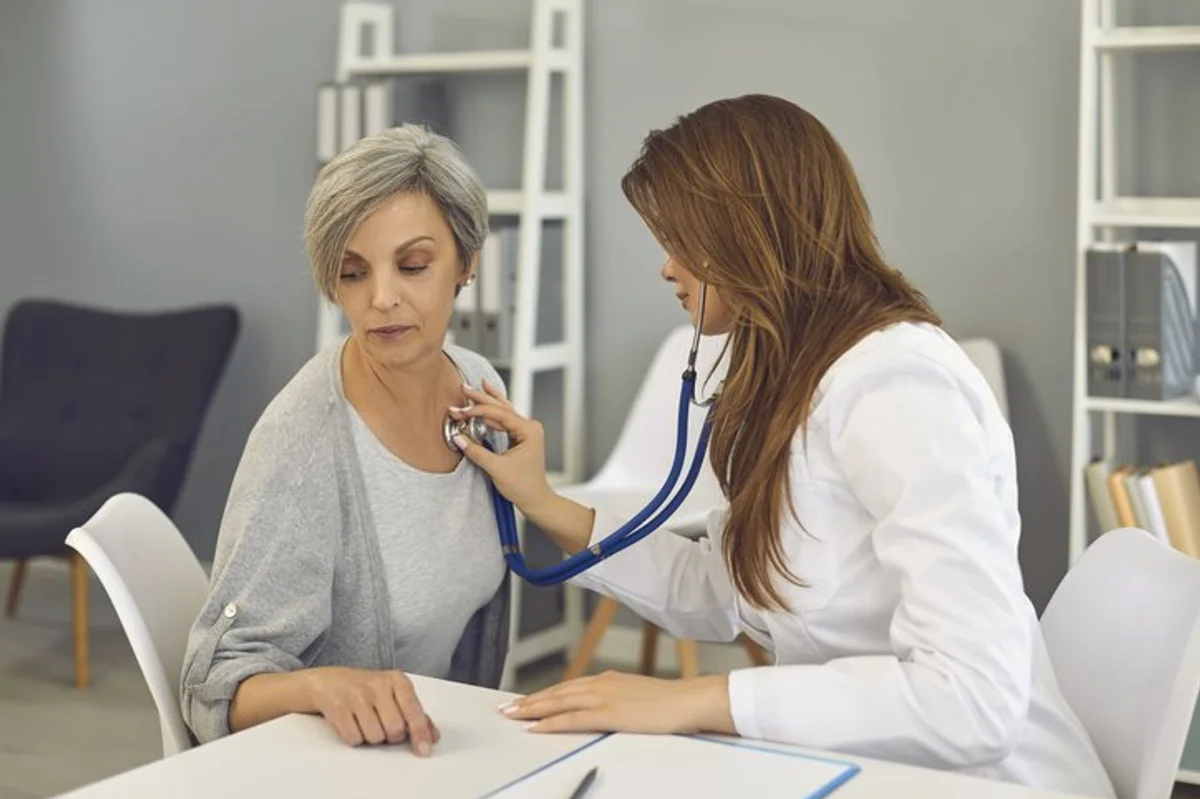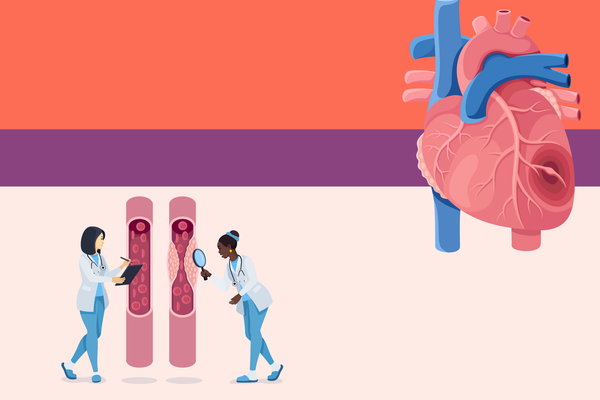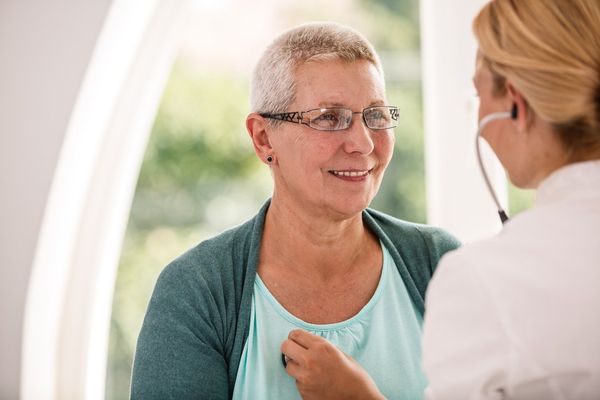Katherine Wilemon was 39 when she experienced crushing chest pain and pain radiating down her right arm. Her jaw was tight and she was scared.
The paramedics who brought her to the emergency department (ED) said it was unlikely she was having a heart attack and told her to stay calm.
“If it was your husband, maybe, but there’s no way you’re having a heart attack,” one of them told her.
Their response doesn’t really make sense, but it happens a lot.
Somehow, even though heart disease is the leading cause of death for both women and men, men and women are often treated differently for heart disease. And, a 2022 report showed significant differences in the guidance that women and men receive regarding heart disease.
The study of more than 8,500 adults between ages 40 and 79 found that men were 20% more likely than women to be prescribed a statin, a cholesterol-lowering drug class.
Women were 27% more likely than men to be advised to lose weight, 38% more likely to be advised to exercise regularly and 11% more likely to be told to lower their fat or caloric intake.
Those findings may suggest gender bias, but the full story is more complex, according to Nieca Goldberg, M.D., clinical associate professor at NYU Grossman School of Medicine and a member of the HealthyWomen Women’s Health Advisory Council.
“It could be bias,” Goldberg said. “But there are so many things that could be [contributing] to lack of prescriptions [for] statin therapy.”
Goldberg said that women aren’t always given full explanations of all their options. Additionally, Goldberg sees many women who are concerned about potential side effects from statins and are generally unsure about taking long-term medication.
Recognizing heart attacks and heart disease is even more overlooked in women under age 55. Previous studies have shown that younger women are often treated less aggressively when they go to the hospital with cardiac symptoms, and they’re also more likely to die in the hospital from a heart attack. An earlier study found that women under age 55 and people of color were more likely than others to be mistakenly sent home from the ED rather than being admitted to the hospital.
Unfortunately, recent research shows that another problem is that women are still struggling to be heard when it comes to heart problems. According to one study, women who went to the ED with chest pain were less likely to be considered to be having an emergency and less likely to be admitted to the hospital. That study also found that people of color had to wait longer to be seen by a healthcare provider (HCP).
These disparities may be partly due to the fact that women’s heart disease symptoms aren’t always the same as men’s. A 2018 study found that women are more likely to experience symptoms other than or in addition to chest pain, such as jaw, neck, arm or shoulder pain. That same study also found that, even though women were more likely than men to seek medical care for similar symptoms, more than half of the women reported that their HCP didn’t think their symptoms were heart-related.
There is no one answer to this problem, but Goldberg offered up several possibilities. One solution might be to have more female clinicians. Another might be to offer healthcare providers better training so they understand what heart attacks and heart disease look like in women. She added, “[Clinicians] need to be more inquisitive and more aggressive about finding these risks.”
According to Goldberg, the biggest problem, though, is a lack of access to healthcare and low health literacy. She suggested that reducing disparities in heart health care for women will require getting communities and individuals involved to promote health screenings and to meet people where they are to engage them in their health.
How to prevent heart disease
Despite disparities, heart disease risk factors such as high cholesterol, high blood pressure and smoking are fairly universal.
According to Goldberg, there are strategies for preventing heart disease. She recommends taking a proactive approach. Aerobic exercise, such as running, walking, dancing or cycling, is a great foundation of a heart disease prevention program. Aerobic exercise can help you lose weight, lower cholesterol, lower blood pressure and improve your mood.
From that foundation, Goldberg suggests focusing on eating unprocessed foods such as fresh fruits, vegetables and whole grains, and minimizing meats and sweets.
Recognizing risks and improving heart health
To prevent heart disease, it’s important to understand your own risks.
“In order to really own up to taking care of yourself for a particular condition, you really have to feel that you’re at risk for it,” Goldberg said. “It’s not a one-size-fits-all policy. It’s about getting a diverse group of women to understand what their risks are.”
Goldberg recommends that women work with their HCPs to assess their specific risks. HCPs can check blood pressure, cholesterol and glucose levels, and also dive deeper into family history. If close relatives (such as parents or siblings) have had heart disease, you may be at greater risk, too. HCPs can do additional blood tests and CT scans to further identify risk factors.
Still, knowing your risks may not be enough to prevent heart disease.
Wilemon had been on high alert for heart disease from an early age because she was at high risk for heart problems. Still, she felt repeatedly dismissed. When she went to the ED with chest pain, the staff sent her home with a suggestion to see her cardiologist.
The cardiologist was also not particularly worried. But Wilemon refused to leave his office without a new stress test. That test revealed that her heart wasn’t getting the blood and oxygen it needed. She went straight into surgery with what turned out to be 100% blockage of the main artery feeding blood to her heart.
“Heart disease is really scary and often deadly,” Wilemon said. “The best thing you can do is be proactive about your heart health. You are the most important person on your healthcare team.”
Wilemon went on to create the Family Heart Foundation to empower patients and families to treat and prevent heart disease. She recommends finding an advocate — such as a partner, parent, friend or adult child — to help you navigate your healthcare.
“Healthcare in America is tough to navigate alone. If you don’t feel ‘right’ you might need someone else to make sure your concerns are being taken seriously,” Wilemon said. “Most importantly, listen to yourself and honor the signals that are coming from your body. You do not have to understand what might be going wrong to know something is wrong with your own body.”
- Heart Disease: What Women Don’t Know ›
- Did You Know That Heart Disease Affects Women of Color Differently? ›
- Public Awareness Campaign on Sex Differences in Heart Disease and Improving Recruitment and Retention of Women in Device Trials ›
- Women’s Health Concerns Are Often Dismissed - HealthyWomen ›
- I Lived a Healthy Life, But I Had a Heart Attack - HealthyWomen ›
- WomenTalk: The Heart Truth - HealthyWomen ›
- Black Women Face Double Risk Pregnancy-Related Heart Failure - HealthyWomen ›




